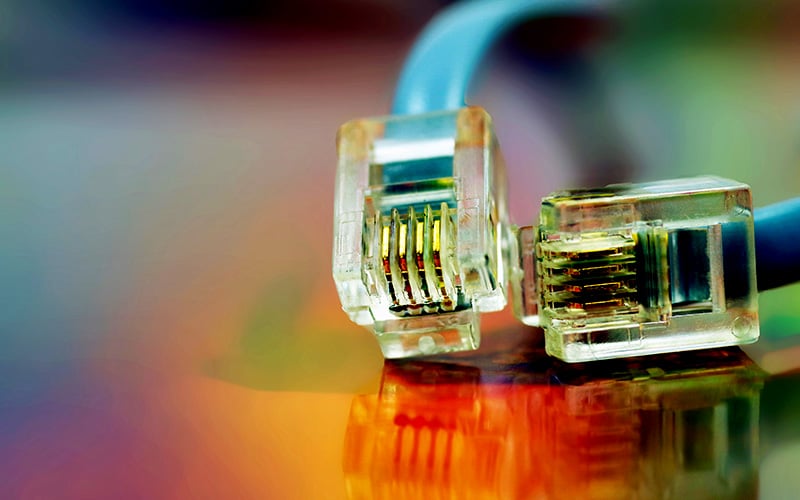Insights
- Automated meter reading (AMR) revolutionized power consumption monitoring in the US and offered remote reading capability, accuracy, and cost savings.
- AMR established a foundation for advanced metering infrastructure (AMI) with two-way communication between consumers and utilities.
- However, large-scale AMI deployment introduced challenges such as inconsistent data formats, interoperability issues, and cybersecurity concerns.
- To manage this complexity, utilities require a centralized, multiutility, smart meter operations center (SMOC).
- A SMOC monitors and manages smart meter assets, their communication, and underlying key performance indicators for AMI processes with a 360-degree perspective.
- SMOCs enable utilities to implement technologies like traditional and generative AI to unlock opportunities in operations and customer engagement.
In late 1980s, automated meter reading (AMR) revolutionized power consumption monitoring in the US by replacing electromechanical meters. AMR offers remote meter reading, accuracy, and cost savings by eliminating manual efforts. This automation established a foundation for two-way communication between consumers and utilities and fueled the development of advanced metering infrastructure (AMI), a significant step toward grid modernization.
The US Department of Energy describes AMI as “an integrated system of smart meters, communications networks, and data management systems that enables two-way communication between utilities and customers.” Over 15 years, AMI has transformed utility operations and customer service. Now, AMI 2.0 empowers a new era of digital metering with edge computing for localized decision making. This enables distributed energy management and load balancing, where consumers become “prosumers” not just consuming but also producing energy through renewable sources like rooftop solar panels and wind.
However, large-scale AMI deployment introduces challenges such as inconsistent data formats, interoperability issues, and cybersecurity concerns. Some US utilities have completed smart meter rollouts but struggle with managing AMI functions across discrete systems. To manage this complexity, utilities require a centralized, multiutility, smart meter operations center (SMOC).
Large-scale AMI deployment brings challenges such as interoperability and cybersecurity concerns, pushing the need for SMOCs.
SMOC and its features
A SMOC monitors and manages smart meter assets, their communication, and underlying key performance indicators for AMI processes. It provides a 360-degree perspective of critical AMI business functions and manages smart metering processes from energy consumption through revenue recognition (Figure 1).
Figure 1. SMOC attributes
Source: Infosys
SMOC requirements:
- Unified view. Comprehensive perspective of AMI information from multiple discrete systems for a holistic view of business processes.
- Smart logins. Single-click, with personalized dashboard configuration and audit log access.
- Advanced analytics. Platform for business users to conduct AMI analysis on meter and associated application data captured from multiple sources.
- Interoperability. API and database integrators, batch processes, and plug-and-play modules to communicate with other systems.
- Mobile app. Application feature extension to mobile devices to access critical information on the go.
- Real-time dashboards. Integrated view of critical business processes and rapid monitoring of infrastructure, critical jobs, and networks.
- Monitoring and alerts. System processes with configurable alert thresholds for applications, database server, network, and audit logs.
- Cognitive automation. Critical grid analysis to identify patterns, make informed decisions to prevent disruptions, and recommend automation possibilities.
SMOC functional aspects
Smart meters enable real-time tracking of energy demand and supply, which allows consumers to optimize usage during off-peak hours and reduce bills. In 2022, UK utility National Grid proposed to incentivize consumers who avoid high-energy consumption during peak hours, using digital meters. According to this ongoing proposal, consumers, typically paying 28.3p per kilowatt-hour, can receive incentives to reduce peak-hour usage. Smart meters are essential for such a scheme, maintaining minute-by-minute energy usage records for billing and future audits.
The Netherlands faced challenges in their smart metering initiative. Their utilities had difficulty gathering real-time data, and consumer application readings were several days out of date. However, the issue stemmed from deficient IT infrastructure, and not smart meters themselves. Data was stored in siloes and limited accessibility to conduct analysis. SMOCs and their architecture considerations — like integrated access — are pivotal for agile AMI management to realize its significant potential.
Primary functions supporting SMOC:
- Customer service. Offered across multiple modes with dashboards and messages, based on information criticality. Requires multichannel interfaces with successful move in/move out, usage data availability, fault detection, and reduction of call handling time.
- Billing, payments, and collections. Billing is the core of meter-to-cash and vital for revenue efficiency. A UK study revealed utilities fail to collect up to 4.5% of revenue, resulting in leakage of £3.3 billion. This is driven by inaccurate data, poor reconciliation, lack of governance and control, and human error. Digital meters have the capability to address these causes and greatly reduce revenue leakage.
- Outages. Supply-demand mismatches cause outages, as do unforeseen situations like natural calamities. Consumers in the US faced 1.4 outages and 5.5 outage hours in 2022, primarily due to extreme weather events. SMOCs utilize AI and external data sources to forecast outages early and minimize their impact, proactively identifying and addressing issues. For unavoidable outages, SMOCs expedite restoration through root-cause analysis, restoration guidance, and monitoring.
- Distribution planning and operations. New generation grids shift from centralized to distributed control. Consumers evolve into prosumers by producing electricity locally and storing it with solar, battery, and electric vehicles that consume energy and give back to the grid. SMOCs ensure accurate Distributed Energy Resources (DER) forecasting, load balancing, and improved power quality within this distributed ecosystem.
Figure 2. Functional SMOC aspects
Source: Infosys
E.ON Next’s smart meter journey
UK launched its Smart Energy GB campaign in 2014, with a December 2025 deadline for utilities to roll out smart meters for households and small businesses. One such supplier E.ON underwent a corporate restructuring, forming a dedicated entity called E.ON Next, to offer digital capabilities and ancillary services from installation to maintenance of smart meters. The digital platform — the SMOC — was an integral aspect of E.ON Next’s value delivery model (the firm used Infosys as technology partner to create and deploy the platform). The platform was built on cloud-native technologies, with a modular, agile approach, and microservices. E.ON faced challenges on the digital side of its smart implementation rollout, as its systems were siloed and built on a legacy platform. The new platform had to be ready for future technology requirements, with agility to create innovations and rapidly incorporate them into the platform.
Recommendations
SMOCs may be the future of utilities and their smart meters, but they require several capabilities. Below are recommendations for utilities seeking to create successful SMOCs:
- Sustainability and utilities’ critical role is an important consideration of the SMOC business case. AMI systems integration also creates sustainability benefits like reduced waste and Scope 3 emissions tracking.
- SMOCs will become the central nervous system that manages and optimizes AMI networks. Utility operations improvement opportunities include efficient message exchanges within and outside the utility network, systems, and data integrations across interconnected systems and applications.
- The SMOC innovation team will develop and offer new services around customer engagement, distributed intelligence, dynamic grid optimization, communication infrastructure, cybersecurity, and data privacy. SMOC can differentiate a utility where power is a commodity. Customer loyalty can be cultivated through high quality services and creative features.
- While digitization presents opportunities, it poses threats like cybersecurity risks, necessitating awareness and expertise across the organization, starting from leadership.
SMOCs enable utilities to implement technologies like traditional and generative AI to unlock opportunities in operations and customer engagement
- SMOCs enable utilities to explore and implement new technologies like generative AI, traditional AI/ML, and analytics to unlock further opportunities in customer engagement. Utilities should accelerate their mastery of emerging tech through technology providers and data analytics companies to expand SMOC offerings and capabilities, addressing talent shortages in critical areas.







